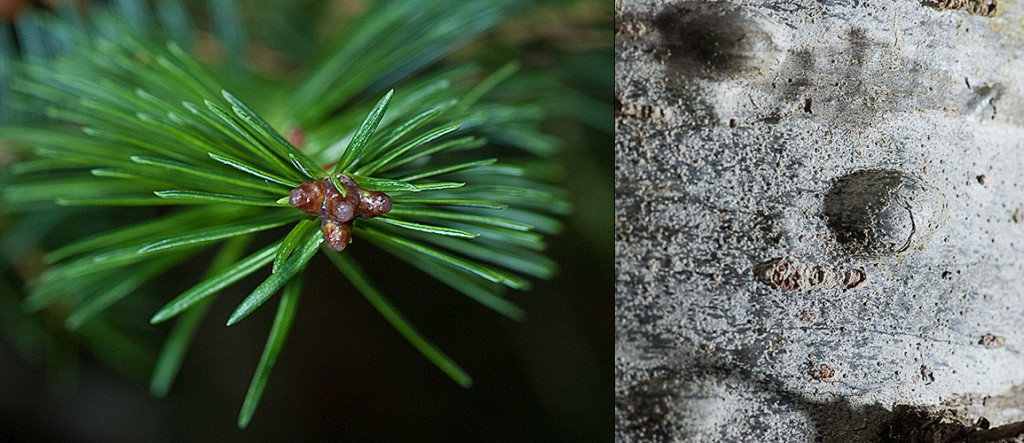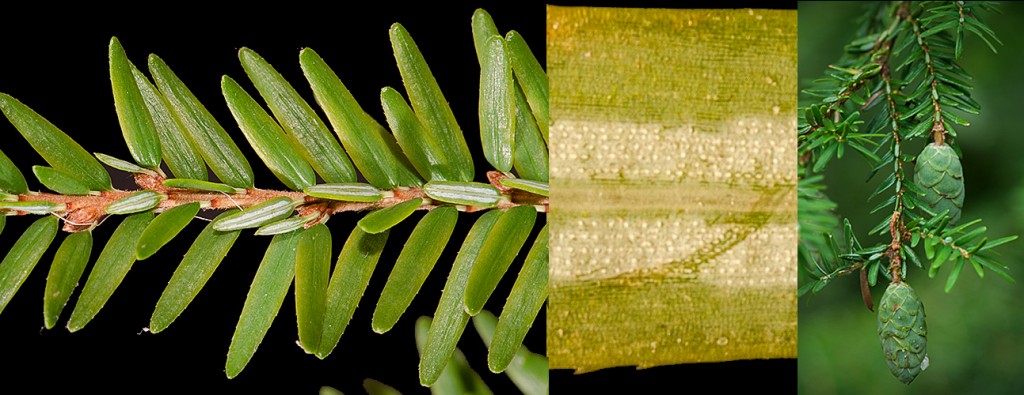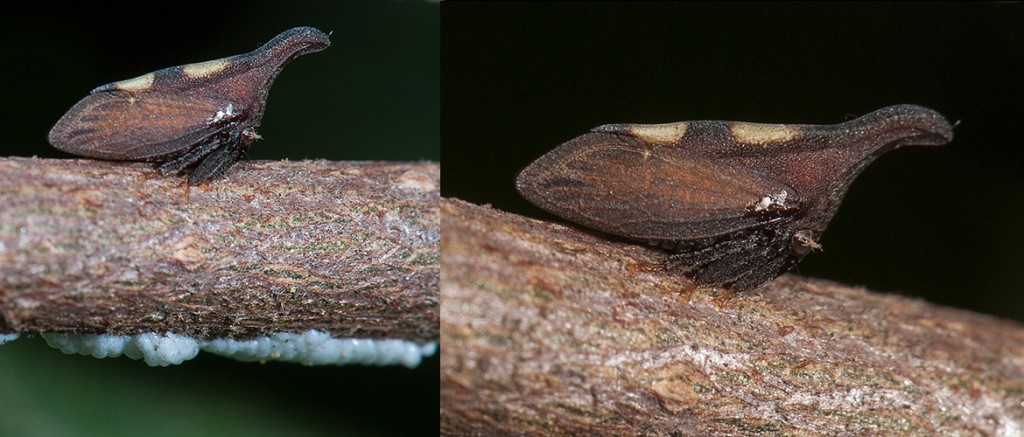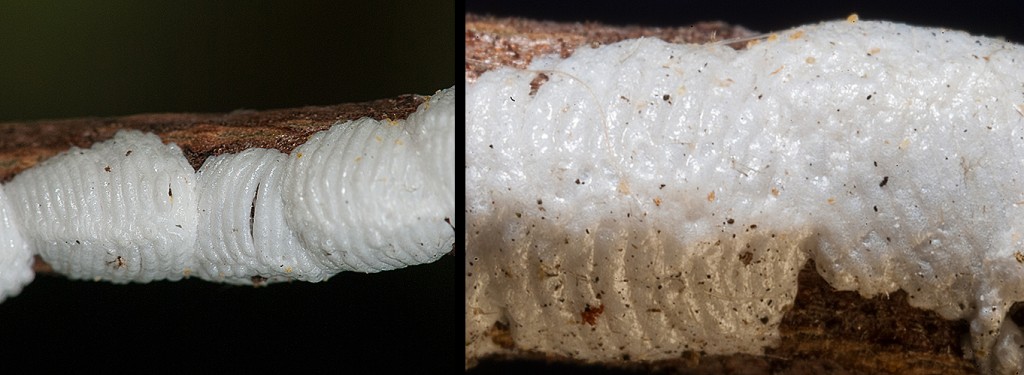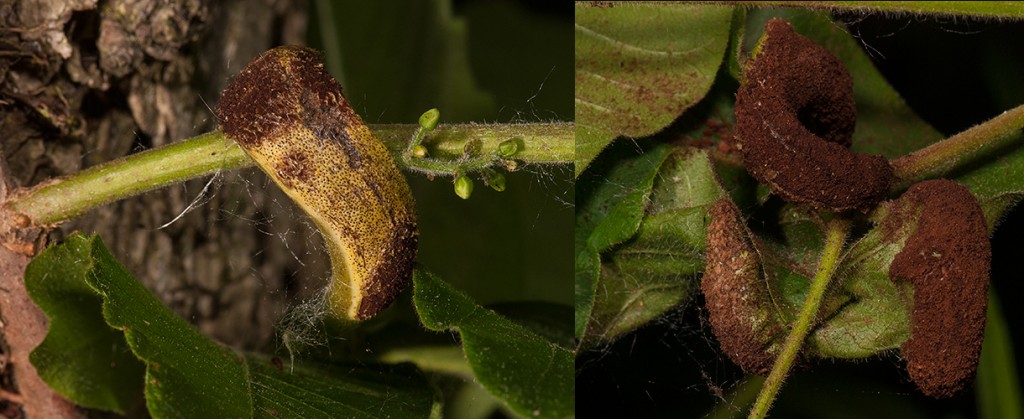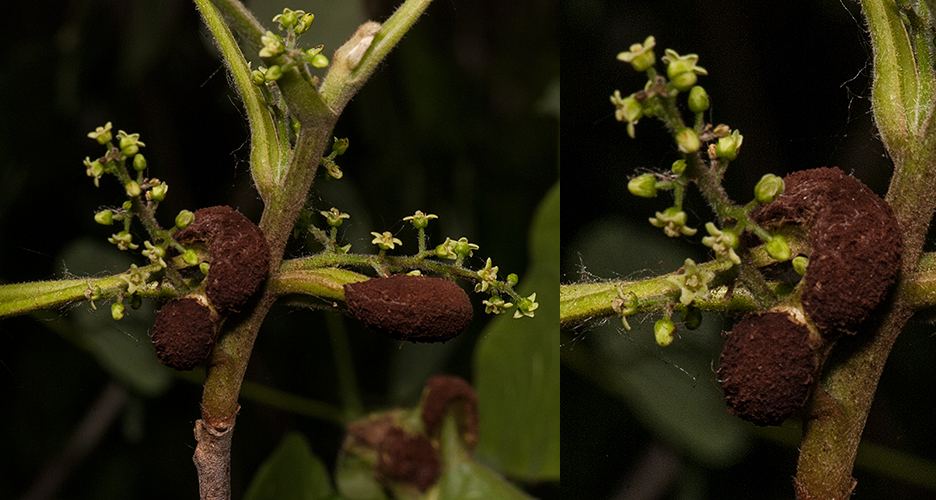Balsam Fir, (Abies balsamea) is a common conifer in northern Michigan. It often grows with Aspen (Populus grandidentata & P. tremuloides), Jack Pine (Pinus banksiana), or Paper Birch (Betula papyrifera). It is also found in White Cedar (Thuja) swamps and bogs. Often the needles form flat branchlets but the needles can encircle a branch, resembling a spruce (Picea) branchlet. When I began to look for spruce trees to photograph I was surprised to find that many of the stands I thought were spruce actually were Balsam Fir with their needles encircling the twigs. Spruces have square needle cross-sections and Balsam Firs have rectangular cross-sections. The needle scar, that is the mark left on the twigs when the needle falls off, is round on the Balsam Fir. Its needles fall and leave a clean branch. Spruces leave rough projections along the branchlets after the needles fall. Balsam Firs tend to hold their dead needles on older branches and spruces shed their needles. Balsam Fir has distinctive pitch filled pockets under the surface of its bark.
Although I spend much of my field time in the range of Balsam Fir, I seldom see it producing cones. Perhaps they are produced at the tops of tall firs and I miss them. The cones fall apart, dehisce is the technical term, while still attached to the branches, so no cones fall to the forest floor. I often see seedling Balsam Firs so they must be producing cones.
Eastern Hemlock (Tsuga canadensis) is common north of Bay City and rarer in southern Michigan where it will grow in a protected hollow or ravine. In the north, it will grow with hardwood trees, White Pine, or in pure stands. Hartwick Pines State Park has an elevated, barrier free, “treetop” walkway leading into its Forest Center. The walkway leads through a nice Hemlock and American Beech (Fagus grandifolia) woods. I enjoy walking through the treetops and peering into the canopy. I photographed the Hemlock cones from this platform.
The needles are short, normally less than 13mm (1/2 inch), blunt, with a few teeth toward the tip. They are dark green above and have a white stripe on the lower surface. The white stripe is actually composed of minute openings in the leaf called stomata. These openings allow the plant to “breath.” Hemlocks also have needles that lay on the twig, with their lower surface pointing up. The needles appear to occur in flattened clusters but actually are produced from around the twig. The leaves bend, giving the branch its characteristic flattened look.
Copyright 2013 by Donald Drife
Webpage Michigan Nature Guy
Follow MichiganNatureGuy on Facebook


